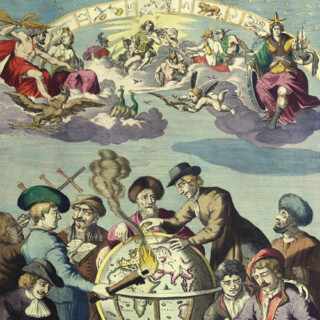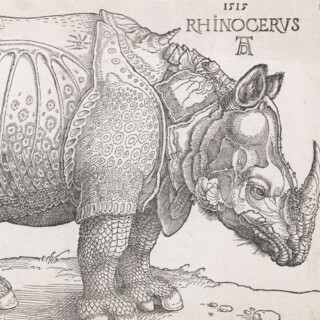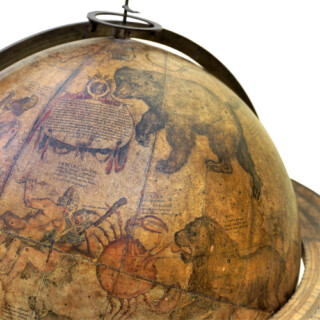A well-deserved prayer is made for the young man who smells the requisite flowers along the winding paths of geography
Pomponij Mellæ Cosmographi Geographi
Prisciani quo ex dionysio Thessalonicensi de situ orbis interpretatio. Pomponij Mellae de orbis situ Liber primus. Prooemium.
Venice,
Erhard Ratdolt,
18th July, 1482.
Two parts in one volume. Small quarto (190 by 145mm). Full-page woodcut map of the world on a Ptolemaic cone-shaped projection surrounded by an architectural border, first page of text with headline printed in red, two 11-line and five five-line floriated initials; early vellum with tan and black lettering pieces to spine.
Collation: A-F(8)
Collation: A-F(8)
190 by 145mm. (7.5 by 5.75 inches).
21770
notes:
"The second woodcut map printed in Italy" (Campbell p.119). This was the first map to depict current Portuguese knowledge of the west coast of Africa which led, only six years later, to the rounding of the Cape of Good Hope. Campbell suggests that the edition's printer, Erhard Ratdolt, may have been the mapmaker, since this and his T-O map of 1480 are the two earliest woodcut maps printed in Italy.
The title of the map nouellae etati ad geographie u(er)miculatos ...
The title of the map nouellae etati ad geographie u(er)miculatos ...
bibliography:
Brown, 41; Campbell, 91; Goff, M-452; Hain, 11019; Polain, 2661; Shirley [World], 8; Suarez, 7; Wilson, 115.
provenance:










